|
|
||
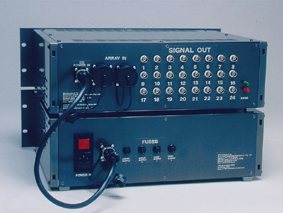
The rear panels of the Trout deckboxes include fully fused power connections, the array connections, and the signal outputs. Standard outputs are easy hookup BNC jacks. Customer specified multi-pin connector outputs are available as an option. |
||
|
|
||
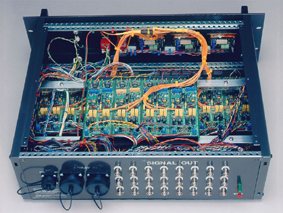
An interior view of the front panel of the Array Receiver Unit for a 24 channel Trout&trade IV deckbox system. |
12 |
|
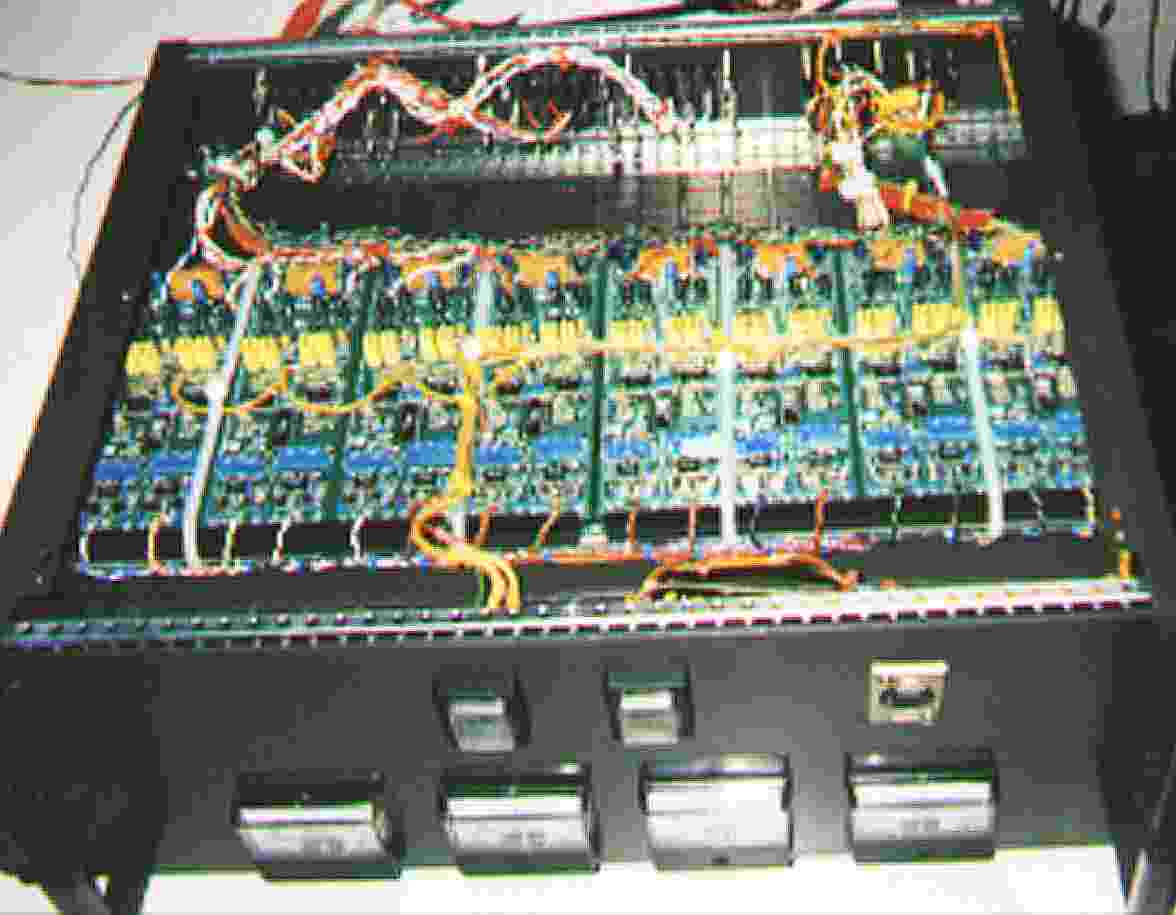
An interior view of the Array Receiver Unit for a 16 channel Trout&trade IV deckbox system, shown here atop of its power supply. Each unit is one rack unit smaller than the 24 channel system. |
||


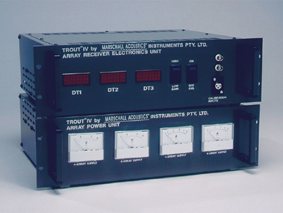 The Trout deckbox system consists of two units: Array
Power Unit and Array Receiver Electronics Unit. The system includes
independent array and deckbox electronics power supplies. Array power
voltage and current are continuously indicated. Deckbox electronics can
include depth indicators as shown here. Two gain settings matching
popular acquisition system full-scale ranges are standard, as is MAI's
unique driven array sensor calibration system.
The Trout deckbox system consists of two units: Array
Power Unit and Array Receiver Electronics Unit. The system includes
independent array and deckbox electronics power supplies. Array power
voltage and current are continuously indicated. Deckbox electronics can
include depth indicators as shown here. Two gain settings matching
popular acquisition system full-scale ranges are standard, as is MAI's
unique driven array sensor calibration system.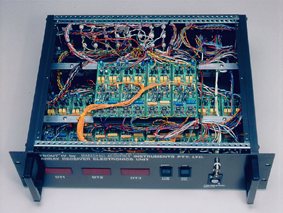 A look at the interior of a 24 channel Trout Array
Receiver Unit. Input and outputs are fully protected. Power supply
decoupling is extensive. Each individual channel is trimmable for
precision gain matching.
A look at the interior of a 24 channel Trout Array
Receiver Unit. Input and outputs are fully protected. Power supply
decoupling is extensive. Each individual channel is trimmable for
precision gain matching.